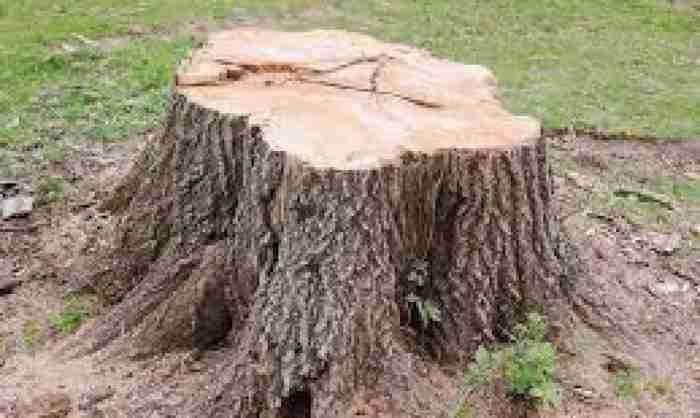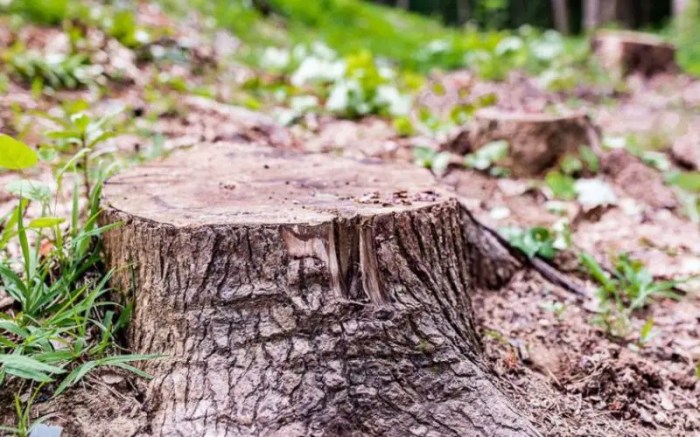Can tree stumps grow? The answer to this question depends on a variety of factors, including the tree species, the size of the stump, and the environmental conditions. In this article, we will explore the process of tree stump regrowth, discuss the factors that influence it, and provide guidance on how to prevent or manage stump regrowth.
Tree stumps can be a nuisance, but they can also be a valuable asset to your landscape. With proper care and management, tree stumps can provide habitat for wildlife, support biodiversity, and add aesthetic value to your property.
Tree Stump Growth Biology

Tree stumps possess the remarkable ability to regenerate, a process known as stump regrowth. This phenomenon is driven by specialized tissues within the stump, called epicormic buds. When a tree is cut down, these buds are activated, initiating the growth of new shoots.
The rate and extent of stump regrowth vary depending on several factors, including tree species, stump size, and environmental conditions.
Certain tree species exhibit particularly strong stump regrowth capabilities. For instance, oak trees are notorious for their ability to produce numerous suckers from stumps. Other species with notable stump regrowth potential include elm, maple, and poplar.
Stump Removal Techniques
Removing tree stumps can be necessary for various reasons, such as safety concerns, aesthetics, or land use. Several methods are available for stump removal, each with its own advantages and disadvantages.
- Grinding:This involves using a specialized machine to grind the stump into small chips. It is a relatively quick and cost-effective method but may leave behind a shallow hole that needs to be filled.
- Chemical treatment:Herbicides can be applied to the stump to kill the remaining roots and prevent regrowth. This method is less invasive but can take several months to be effective.
- Excavation:This involves digging up the entire stump and root system. It is the most thorough method but also the most labor-intensive and expensive.
The best stump removal method depends on factors such as stump size, location, and soil type. For small stumps in accessible areas, grinding may be a suitable option. For larger stumps or those in tight spaces, chemical treatment or excavation may be necessary.
Stump Management Strategies

In some cases, it may be preferable to leave tree stumps in place rather than removing them. Stumps can provide habitat for wildlife, add visual interest to a landscape, and serve as natural play structures for children.
To prevent stump regrowth, it is important to cut the stump close to the ground and seal the top with a stump killer or sealant. Regular mowing or trimming around the stump can also help suppress sucker growth.
If stump regrowth does occur, it can be managed by cutting or mowing the suckers back to the stump. Repeated removal of suckers will eventually exhaust the stump’s resources and prevent further regrowth.
Aesthetic Considerations

Tree stumps can be incorporated into garden designs in various ways to enhance their visual appeal. Small stumps can be used as stepping stones or as bases for sculptures or birdhouses. Larger stumps can be carved into decorative shapes or used as seating.
With some creativity, tree stumps can become unique and eye-catching elements in a landscape. They can add character, texture, and a touch of whimsy to any outdoor space.
Ecological Impact: Can Tree Stumps Grow
Tree stumps play an important ecological role by providing habitat for wildlife and supporting biodiversity. They offer shelter, nesting sites, and food sources for a variety of animals, including insects, birds, and small mammals.
Removing tree stumps can disrupt local ecosystems and reduce the availability of habitat for wildlife. It is important to consider the potential ecological impact before removing a stump, especially in areas with high biodiversity.
If stump removal is necessary, it is crucial to minimize the ecological impact by replanting native trees or shrubs in the area and providing alternative habitat structures for wildlife.
Expert Answers
Can all tree stumps grow?
No, not all tree stumps can grow. Some tree species are more likely to produce stump sprouts than others. Factors such as the size of the stump, the health of the tree, and the environmental conditions can also affect the likelihood of stump regrowth.
What is the best way to prevent stump regrowth?
The best way to prevent stump regrowth is to remove the stump completely. However, if you do not want to remove the stump, there are a few things you can do to discourage regrowth, such as applying a stump killer or grinding the stump down below the soil line.
Can tree stumps be used for anything?
Yes, tree stumps can be used for a variety of purposes, such as creating garden beds, building furniture, or creating wildlife habitat. With a little creativity, you can find many ways to repurpose tree stumps and give them a new life.
